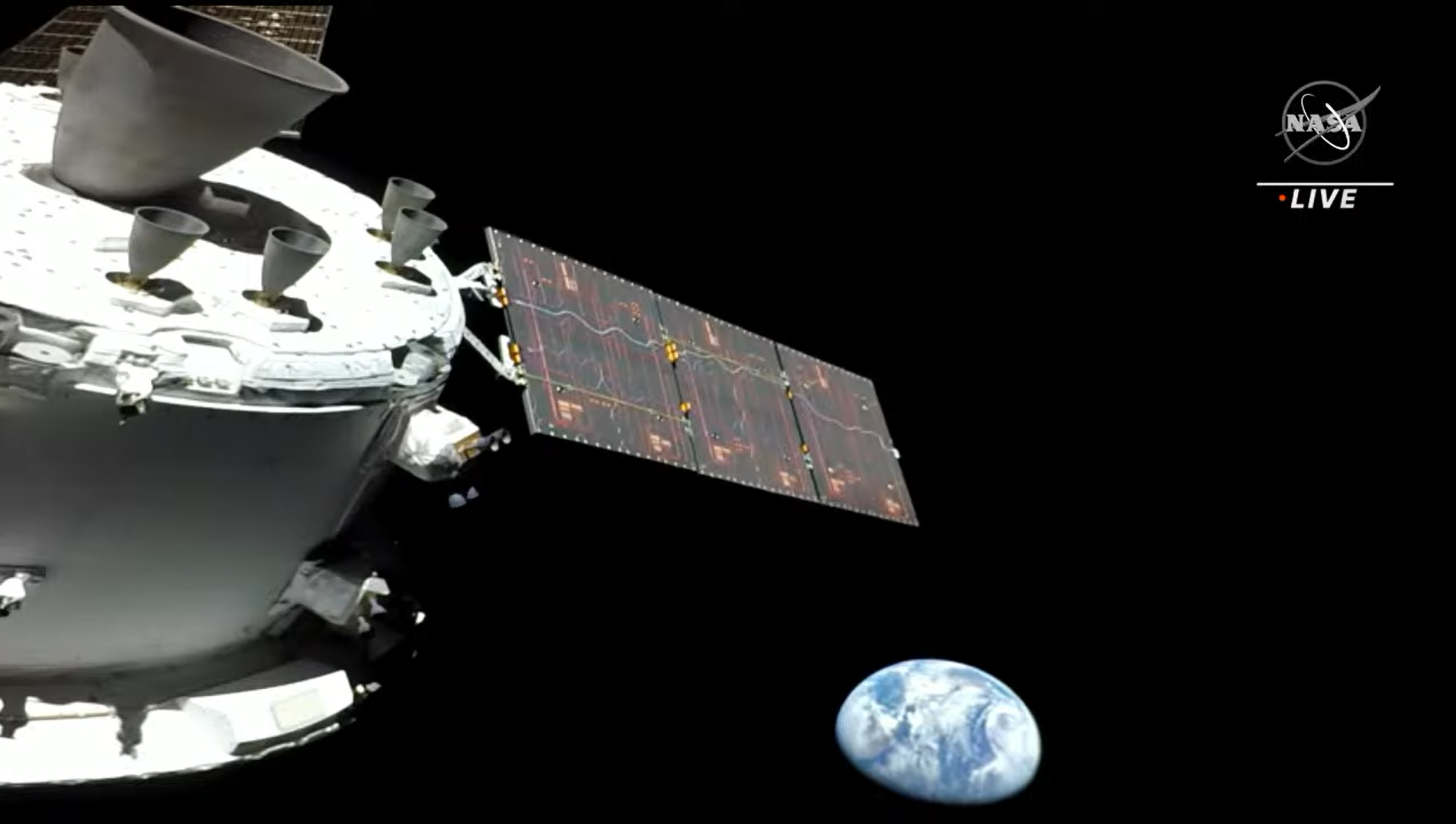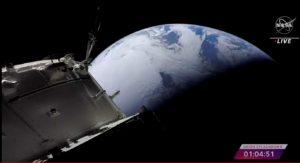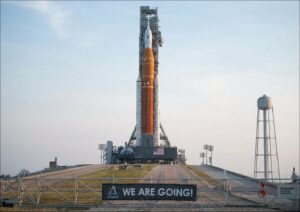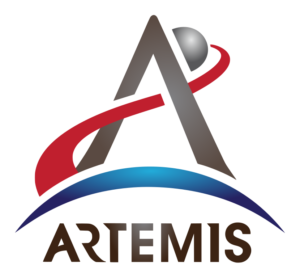After 50 years, we are on the first flight of the program that will take us back to the Moon! After final repairs during the launch countdown, the first SLS rocket took off carrying the Artemis I mission to the Moon.
We are going.
– NASA (@NASA) November 16, 2022
For the first time, the @NASA_SLS rocket and @NASA_Orion fly together. #Artemis I begins a new chapter in human lunar exploration. pic.twitter.com/vmC64Qgft9
The service module solar arrays open, ensuring energy for the mission
All four of Orion’s solar arrays have deployed. pic.twitter.com/4DtzRO3Bl3
– Orion Spacecraft (@NASA_Orion) November 16, 2022
There were some problems that had to be solved for the launch: at T-3h17min, an intermittent hydrogen leak was observed, manifesting itself with a concentration of up to 1.5% in the outside air, which then decreased to 0.2%. The safety limit was 1%. A team was then sent (the “red team”, qualified to approach the rocket while it had fuel) to adjust the torque on the screws on a main stage refueling control valve, located on the launch pad. The team of 2 technicians and a safety officer (to monitor the situation) solved the problem and refueling could continue. Then a problem was found with an internet connection from the Space Force’s 45th Space Wing, which is responsible for the RADAR that observes the exclusion region (to detect if any aircraft invade the flight exclusion zone) and for the termination system (“self-destruct”). The repairs led to a delay of around 45 minutes, but once completed, the countdown continued and the launch went perfectly.
Orion, mated to the service module and second stage (ICPS), stayed safe in low orbit after the Perigee Raise Maneuver, at T+47m, to ensure that its orbit does not intercept the Earth. After more tests and in orbit checks, the ICPS was used in a long burn to put it on the trajectory to the Moon (TLI – Trans-Lunar Injection), before separating from the service module. The ICPS is on a trajectory in which, after passing close to the Moon, it will be placed in a heliocentric orbit (orbiting the Sun, no longer the Earth). And Orion, with its service module, is heading for the Moon, as planned. After placing itself in the Moon’s distant retrograde orbit, Orion will spend a week there and then return to Earth at the end of its 26-day mission.
It’s already possible to see the Earth filmed by the Orion capsule!
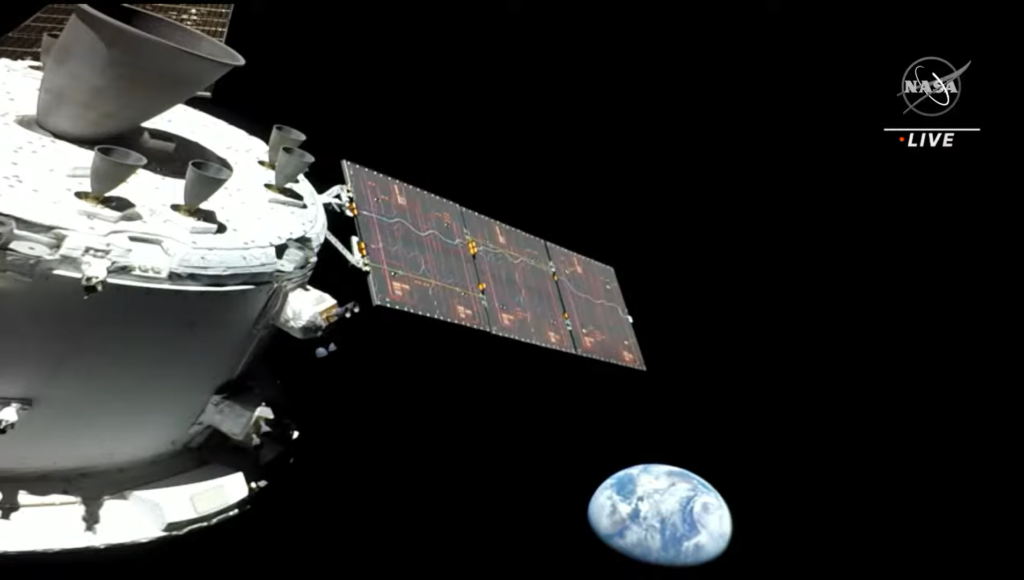
What’s next?
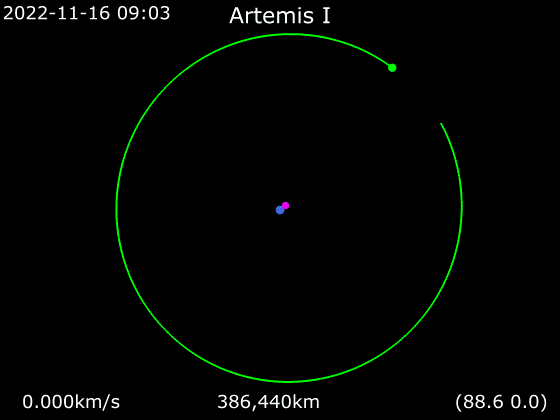
Until day 6 of the mission (November 22), Orion will be traveling towards its rendezvous with the Moon, when it will use the Moon’s gravity and the service module’s engine to put itself on a trajectory leading to its distant retrograde orbit (DRO) around the Moon, where it will arrive on day 10 of the mission and spend 6 days. Then, on the 16th, it will use the service module’s engine to leave the DRO, heading for a new pass close to the Moon, to once again use the Moon’s gravity and a burn of the service module’s engine to put itself on the trajectory back to Earth. It will arrive on Earth on day 26 of the mission (December 11), when the test that is the main objective of the mission will take place: re-entry into the Earth’s atmosphere, coming at translunar speed (11 km/s). This is the test for the heat shield and the re-entry trajectory into the atmosphere (which includes “bouncing” once, to reduce speed more gradually). The Orion capsule and its heat shield were tested in 2014, but as it was only a not-so-high orbit (because it was the maximum possible with the largest rocket available at the time, a Delta IV Heavy), the re-entry speed was lower, just 8.9 km/s. After re-entry, the capsule will parachute down to land in the ocean near San Diego, where it will be “fished out” by a Navy ship.

Who’s inside Orion?
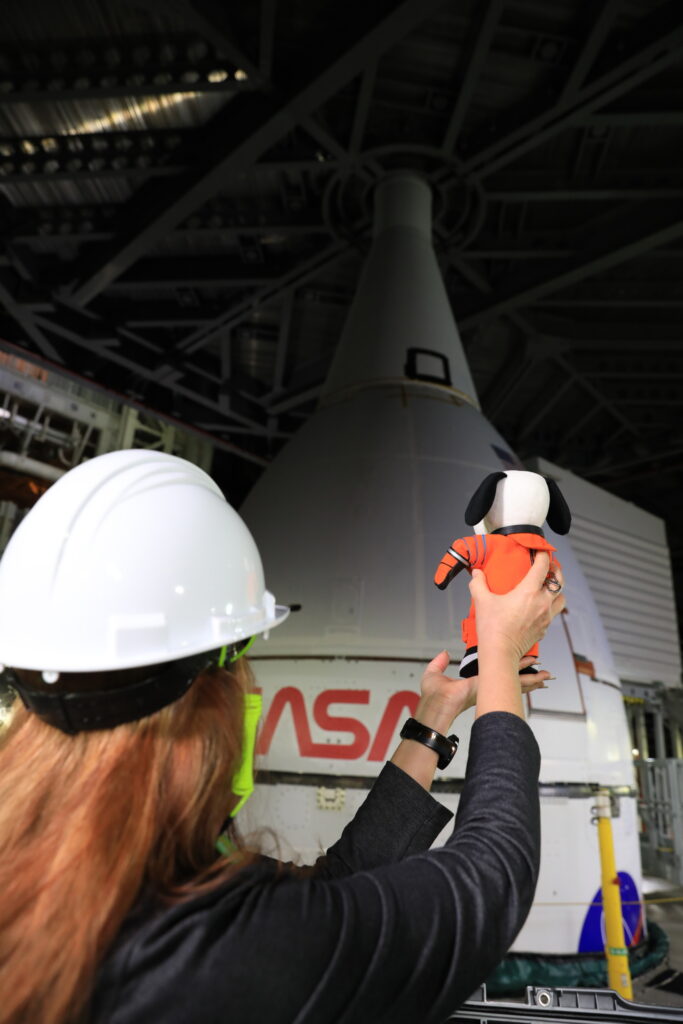
Astronaut Snoopy (NASA) 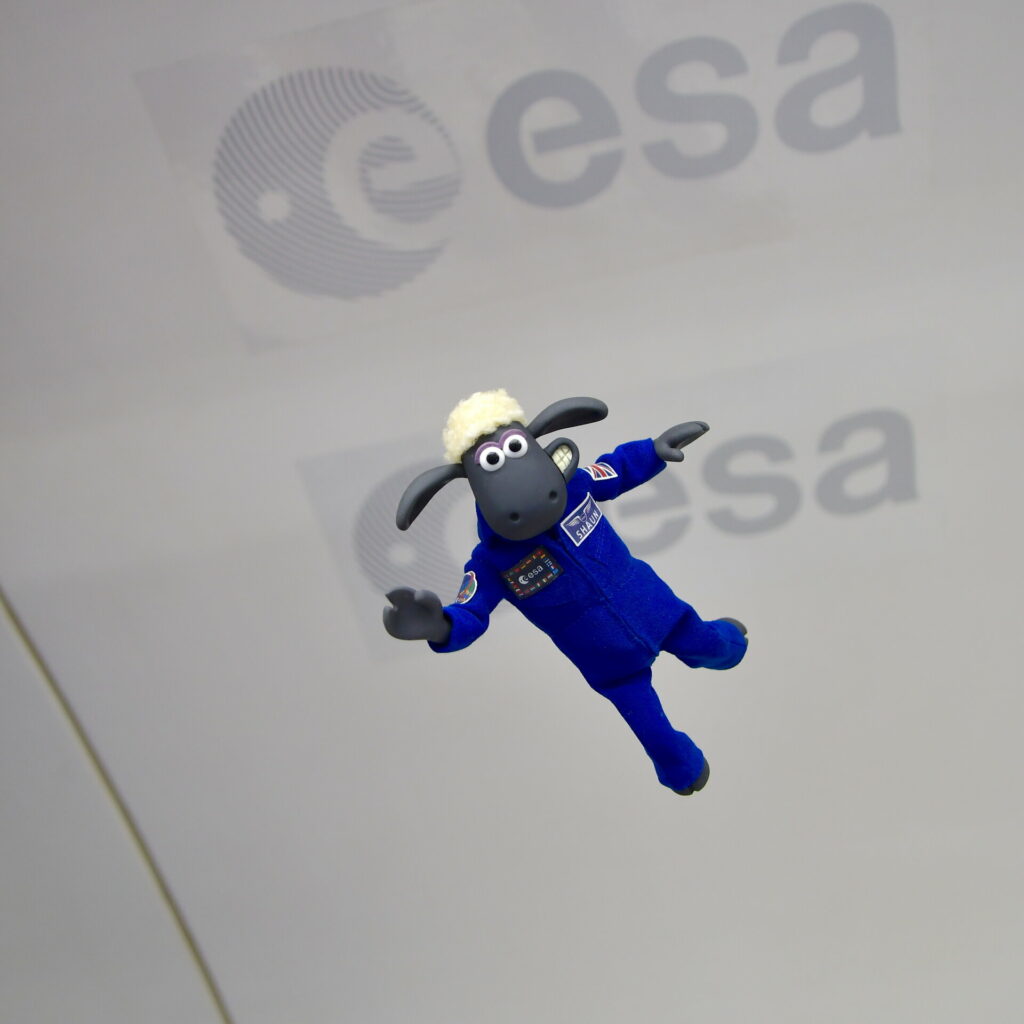
Astronaut Shaun The Sheep (ESA) 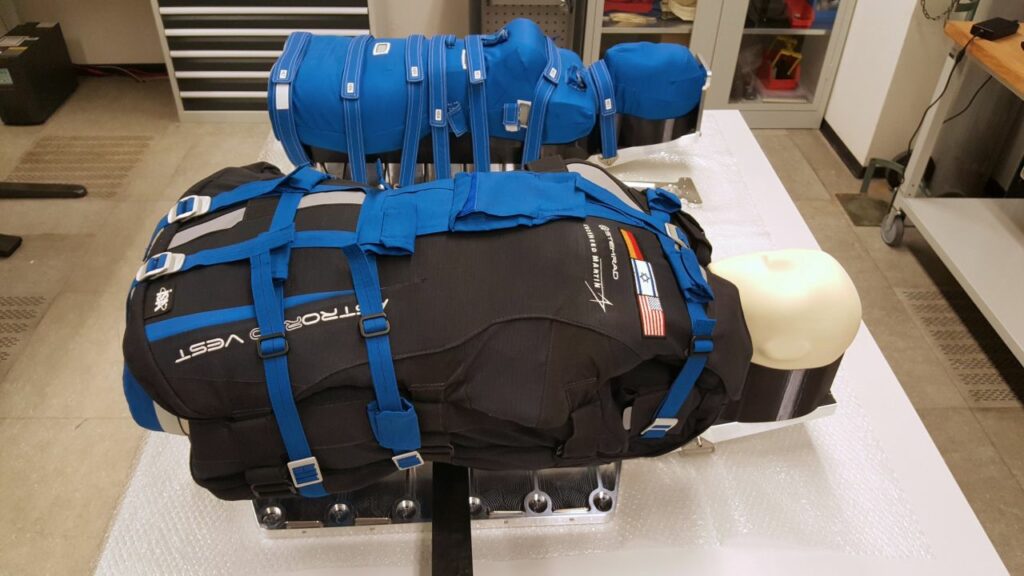
Helga and Zohar 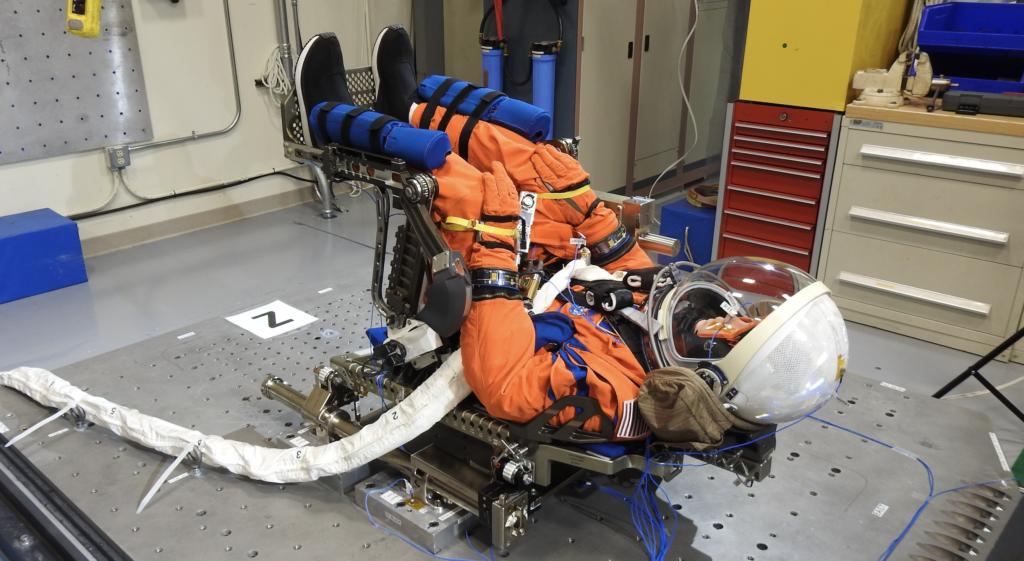
Moonikin Campos
Despite being an unmanned mission, Artemis has six passengers:
- Zero gravity indicators: Astronaut Snoopy (NASA) and Astronaut Shaun The Sheep (ESA). Traditionally, soft objects loose in the cabin are used to visually observe when the spacecraft is in zero gravity. For this mission, NASA chose an astronaut with decades of experience since the Apollo project, Snoopy. The Apollo 10 lunar module was officially named Snoopy, while the command and service module was called Charlie Brown. ESA sent the British Shaun The Sheep.
- Moonikin Campos: The mannequin with sensors used to test the suit (Orion Crew Survival System – OCSS), which will be used by astronauts to protect them during the riskyer phases, being able to supply air and maintain pressurization, control temperature and supply fluids for consumption, being able to maintain an astronaut for up to 6 days if there is a loss of pressure in the cabin. The mannequin is named after Arturo Campos, an electrical systems engineer who worked on finding a way to save the astronauts on the Apollo 13 mission.
- Helga and Zohar: simpler mannequins (only torso and head), for an experiment to test a new radiation protection suit, AstroRad. One mannequin is without the AstroRad, the other is wearing it, which will allow us to measure the difference, to find out what level of protection the garment has provided.
- Callisto: this one without a body is a cousin of Amazon’s Alexa. It is a system developed by Lockheed Martin, Amazon and Cisco to be a virtual assistant for the crew. There is also integration with a Cisco WebEx teleconferencing system.
Find out more at
Our article on Artemis I
Our article on launch delays
Our article on the Artemis program
Our article on the SLS rocket
This post is also available in:
Português
